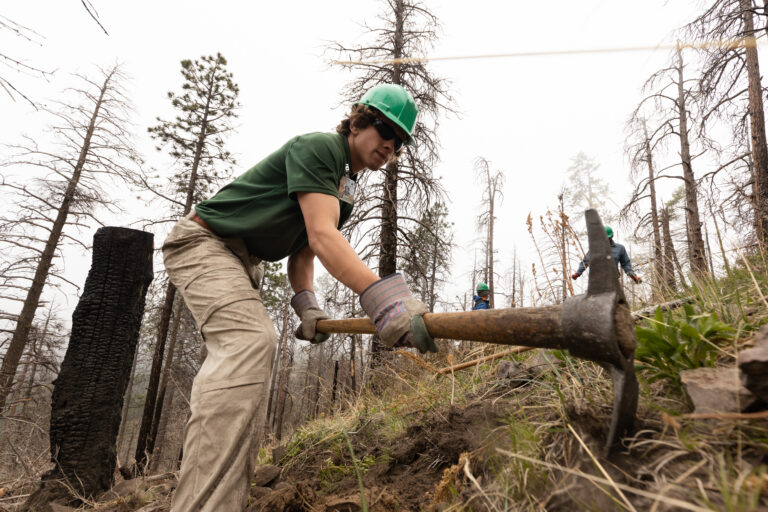Philmont has over 375 miles of hiking trails in the backcountry. For reference, it is about 265 miles between Philmont and Denver, CO. In addition to this, there are over 975 campsites with almost 400 bear cables and 200 latrines, all installed by hand. This trail and camping infrastructure began very informally, following old logging and mining roads or game trails. As usage of the land increased, the need for more sustainable trails and campsites became apparent, and Philmont began to carefully plan out its backcountry infrastructure.
Many factors play into the development of new infrastructure. Good views, access to water, forest health, flooding potential, lightning potential, proximity to staff camps, camper density, terrain, historically significant sites and sensitive ecosystems are just some of the things that need to be considered in the planning and survey process.
A trail or campsite often takes years to develop from start to finish. After a need is identified, surveyors from the Philmont staff will spend weeks in the field developing and laying out a trail or campsite design. Once this is done, teams of staff and participants will begin construction following the plans of the surveyors. The work is complicated and physically demanding, with thousands of hours of work being put into each mile of trail.
Engaging participants in constructing Philmont’s infrastructure helps to develop a tangible legacy that many are proud of and will remember for years to come. Above all else, Philmont Scout Ranch and the Conservation Department is committed to providing the highest quality backcountry experience through intentionally and sustainably designed infrastructure.
